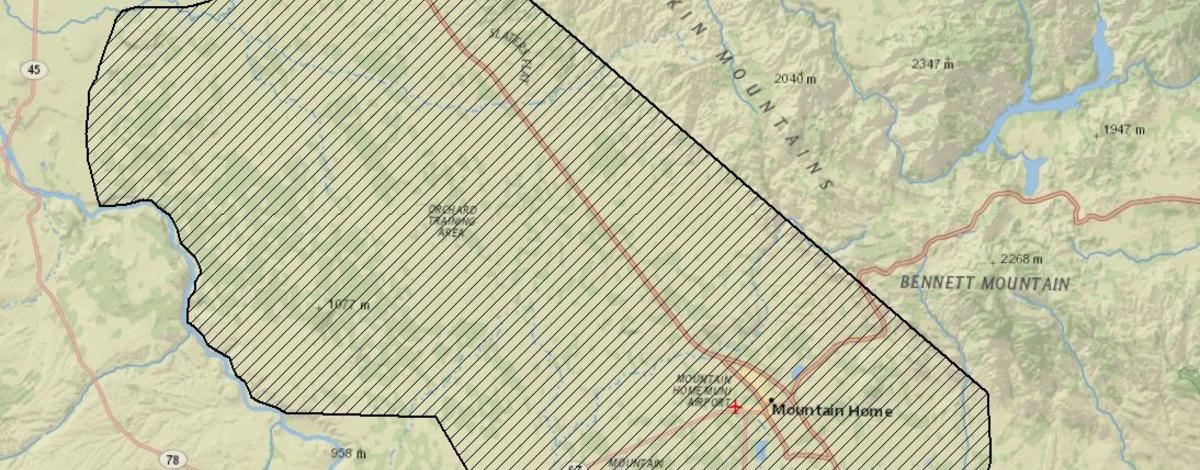Preliminary laboratory tests indicate a second cat from Elmore County likely died of plague. This is the second cat death within the last week thought to be connected to the bacterial infection, though the cats were owned by separate families. The most recent cat lived both indoors and outdoors, and had contact with ground squirrels before becoming ill. Family members and other household pets are being monitored to ensure the cat did not spread the infection. Final lab results will be available next week.
The cat lived approximately two miles from Mountain Home in an area not previously identified with confirmed plague. “We want to emphasize that plague is likely present at some level in ground squirrel populations throughout the sagebrush habitat in southern Idaho. With the known confirmed cases in these areas we want to people to be aware and be able to take appropriate steps to protect themselves and their pets from plague,” said Dr. Mark Drew, State Wildlife Veterinarian.
Plague is transmitted through the bites of infected fleas and can cause serious illness to people and pets if not treated quickly. It also can be transmitted to people by direct contact with infected animals, including rodents, rabbits and pets. Common rodents that can become infected include ground squirrels, rats, voles and mice. Tree squirrels in Idaho are not known to carry plague.
Public health officials urge everyone to take proper precautions to protect themselves and their pets against plague regardless of where they live in proximity to the latest area of impact.
To prevent plague in humans:
- See your doctor immediately about any unexplained illness with a severe fever if you have been in the affected area
- Avoid picking up or touching dead animals; wear gloves if you must handle dead animals
- Do not let pets sleep in bed with you. This has been shown to increase your risk of getting plague
- Clean up areas near the house where rodents could live, such as woodpiles, brush piles, junk and abandoned vehicles
- Put hay, wood, and compost piles as far as possible from your home
- Wear long-sleeved shirts and long pants
- Use DEET on clothing in accordance with label instructions or wear clothing pre-treated with permethrin
- Use DEET on exposed skin, in accordance with label instructions
Plague prevention in pets:
- Do not let your pets hunt or roam in the affected area
- Talk to your veterinarian about using an appropriate flea control product on your pets
- Sick pets should be examined promptly by a veterinarian
- Don’t leave your pet’s food and water where rodents can get to it
Symptoms of Plague
Symptoms of plague in humans include sudden onset of fever, chills, headache, and weakness. In most cases there is a painful swelling of the lymph node in the groin, armpit or neck areas. Plague symptoms in cats and dogs are fever, lethargy and loss of appetite. There may be a swelling in the lymph node under the jaw. With prompt diagnosis and appropriate antibiotic treatment, the fatality rate in people and pets can be greatly reduced. Physicians who suspect plague should promptly report it to their local public health district. Among pets, cats are highly susceptible to plague and may be an indicator that plague is in the area. If plague is suspected, any type of animal or human should be treated by a health professional immediately.
Background
In late May, the Idaho Department of Fish and Game collected dead ground squirrels from several areas in Ada County and submitted them to public health laboratories for testing. The laboratory found the plague bacterium. Ground squirrel populations with plague can experience high mortality, sometimes evidenced by large numbers of carcasses. At this time, plague has been detected in ground squirrels — not tree squirrels. Subsequently, a cat in neighboring Elmore County died of plague.
Plague activity can increase in the spring and summer months when rodents are more active. However, wildlife experts say ground squirrels begin hibernating in late June/early July, at which time the threat of plague will decrease.
For more information on plague, or to report a rodent die-off of five or more animals, visit https://idfg.idaho.gov/plague.
Additional resources can be found here:
- General overview: www.cdc.gov/plague/
- FAQs: www.cdc.gov/plague/faq/index.html
- Protect Yourself From Plague fact sheet
- Idaho Department of Fish and Game: fishandgame.idaho.gov
Area of impact where plague has been identified in ground squirrels to date. Please note that rodents outside of this area may carry plague and prevention efforts should be heeded. Updated 6/10/2016


